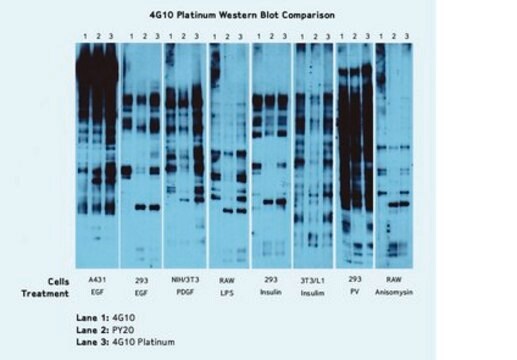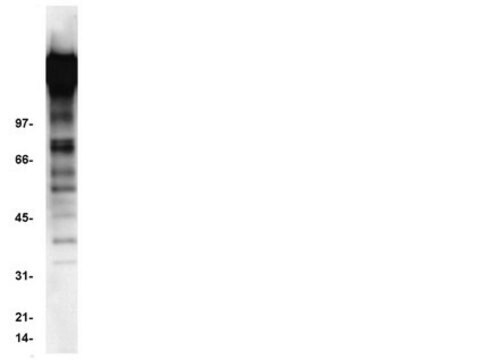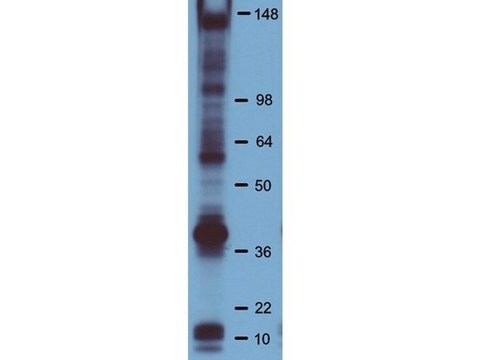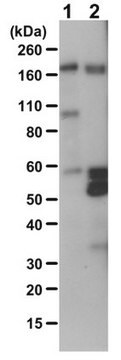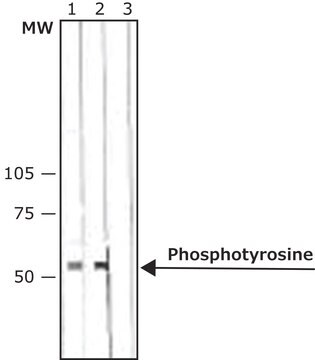05-947
Anti-Phosphotyrosine Antibody, clone PY20
clone PY20, Upstate®, from mouse
About This Item
IP
WB
immunoprecipitation (IP): suitable
western blot: suitable
Recommended Products
biological source
mouse
Quality Level
antibody form
purified antibody
antibody product type
primary antibodies
clone
PY20, monoclonal
species reactivity (predicted by homology)
vertebrates (common species)
manufacturer/tradename
Upstate®
technique(s)
ELISA: suitable
immunoprecipitation (IP): suitable
western blot: suitable
isotype
IgG2b
shipped in
wet ice
target post-translational modification
phosphorylation (pTyr)
Gene Information
human ... PID1(55022)
General description
Specificity
Immunogen
Application
Recommended by an independent laboratory to immunoprecipitate tyrosine phosphorylated proteins.
ELISA:
Recommended by an independent laboratory.
Quality
Western Blot Analysis:
0.5-2 μg/mL of this lot detected tyrosine-phosphorylated proteins in RIPA lysates EGFtreated human A431 carcinoma cells.
Target description
Linkage
Physical form
Storage and Stability
NOTE: DO NOT FREEZE.
For maximum recovery of the product, centrifuge the original vial prior to removing the cap. If the product has accidentally been frozen and thawed, spin it at 13,000 x g for 10 minutes at 2-8°C. Save the supernatant for application.
Analysis Note
Positive Antigen Control: Catalog #12-302, EGF-stimulated A431 cell lysate. Add 2.5µL of 2-mercaptoethanol/100µL of lysate and boil for 5 minutes to reduce the preparation. Load 20µg of reduced lysate per lane for minigels.
Other Notes
Legal Information
Not finding the right product?
Try our Product Selector Tool.
recommended
Storage Class Code
12 - Non Combustible Liquids
WGK
WGK 1
Flash Point(F)
Not applicable
Flash Point(C)
Not applicable
Certificates of Analysis (COA)
Search for Certificates of Analysis (COA) by entering the products Lot/Batch Number. Lot and Batch Numbers can be found on a product’s label following the words ‘Lot’ or ‘Batch’.
Already Own This Product?
Find documentation for the products that you have recently purchased in the Document Library.
Our team of scientists has experience in all areas of research including Life Science, Material Science, Chemical Synthesis, Chromatography, Analytical and many others.
Contact Technical Service
